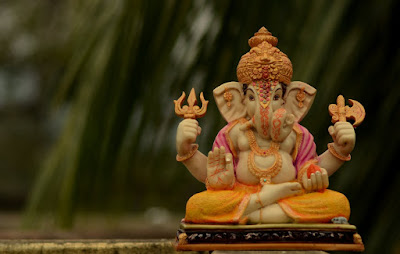Reading Notes: Sita Sings the Blues - Part A

Sita Sings the Blues This is a wonderful film by Nina Paley. It features an animated retelling of the Ramayana. It mixed the expectations that the viewer will have prior knowledge to enjoy the story, but it also provided enough narrative to understand the events through the animations and the narrator's comments. An additional element of including a modern story. This story mimics the events that are taking place in the Ramayana, or at least the relationship status between Sita and Rama. Regardless the film is very informative and entertaining. The art style is heavily inspired by other art I have seen throughout the class. However, it had its own distinct feel. The characters in the story were portrayed accurately based on the information from other lore. I was only able to watch the first half of it but I plan on re-watching it on another day. I would highly recommend this to anyone that has already read the Ramayana. Hanuman, Rama, and Sidta as depicted in the film.













